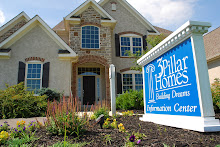The great thing about a new house is that everything is, well, new. Nothing is scratched, stained, or worn out. It's wonderful: Everything works! That's one of the main attractions of buying a new home.
But, as any homeowner knows, the rigors of day-to-day living can cause that blissful new-home feeling to fade. It's an inevitable process, but one that can be stemmed or slowed with proper maintenance of key systems and finishes.
Once an owner takes the keys to their new home, they become responsible for maintenance of the entire structure and all its systems. Typically, professional builders will ease that transition with a warranty, but ultimately the baton is passed to the homeowners to protect their investment, enjoy the comforts, and maintain (or increase) the value of their new home.
The thought of staying on top of everything in a home can seem daunting, but really, it comes down to common sense, some diligence, and a short list of critical products and systems, including:
Heating and cooling. It's a simple thing everyone has heard before. Changing the furnace filter every three months goes a long way toward maintaining the proper operation of a home's entire air distribution system. A clean filter keeps dust, moisture, and other allergens out of the ductwork to help ensure fresh and healthy indoor air. Clean filters and ducts also put an easier load on the furnace, prolonging its life, and allow it to use less energy. Beyond that, homeowners should have the ducts and carpets professionally cleaned every 2-3 years.
Drainage. Rain and other sources of water, must be directed away from the home to maintain the structural integrity of the foundation. To preserve the drainage and watershed design of a house, gutters should be inspected, and when necessary, cleaned and repaired in the fall and early spring. Downspouts should have extensions or splash blocks to direct or disperse runoff away from the house, if they are not already installed. As new landscaping is added, the dirt against the house (called "backfill") must be checked again to be sure that it continues to slope away from the structure. Plantings should be set at least 18 inches away from the foundation, as well.
Roofing and siding. A new home's exterior finishes -- mainly roofing and siding materials -- are designed to last for at least 20 years and usually longer. That being said, any cracks, voids, or other damage to these finishes can lead to leaks and related moisture problems. Visually inspect the roof and sidewalls of the house at least annually for the first five years of ownership, and then semi-annually after that. And, of course, make any repairs immediately.
The effort and consistency you put into maintaining your home will pay dividends for you and your family in the future. Following these basic maintenance tasks are key components in retaining your homes new look and feel, while protecting the value of your investment.
skip to main |
skip to sidebar
We are a new home builder offering custom home plans to meet your lifestyle and budget. Whether you are in the market for a new, semi custom or custom home, we can help you achieve your dream.
3 Pillar Homes
5710 Delano Ave
Lewis Center, OH 43035
(740) 548-8599




